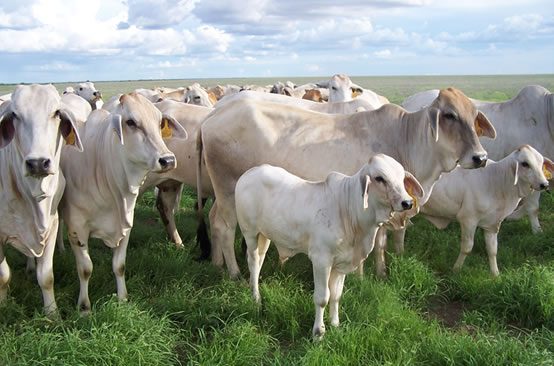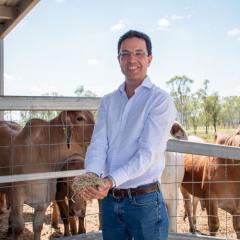A new vaccine offering season-long protection could play an important role in the battle against cattle ticks by reducing reliance on acaricides – pesticides which target ticks and mites – and allowing producers to move cattle from tick free to tick endemic areas. Researchers are also trialling a new single-dose tick vaccine delivery system.

A reformulated long-lasting cattle tick vaccine, which could be in commercial production within four to five years, promises a major advance against the number one cattle pest in the country – and significant progress has been made on a longer term, more effective vaccine.
Ticks are estimated to cost the Australian cattle industry at least $175 million a year and they have a major animal health and welfare impact on herds in tropical cattle regions worldwide.
A team of Queensland scientists led by QAAFI’s Associate Professor Ala Lew-Tabor is developing new improved antigens which produce antibodies to induce an immune response in the animal to protect against ticks.
Associate Professor Lew-Tabor said the long running research, which began twelve years ago within the Queensland Department of Agriculture and Fisheries, was now showing promise and attracting commercial interest.
A range of different combinations of tick antigen have been trialled for their effectiveness on live cattle ticks.
The trials have included modified antigens developed originally in research conducted by the Beef Cooperative Research Centre (Beef CRC) and involves collaborations with the United States and Brazil in evaluations of the effectiveness of different antigen combinations.
Professor Lew-Tabor noted that a superior tick vaccine was still many years from commercial release.
“A breakthrough tick vaccine will be a game changer for northern Australian beef producers and bring many benefits for the industry,” Associate Professor Lew-Tabor said.
Meanwhile, another QAAFI research group is making promising progress on developing a new single-dose delivery mechanism for a tick vaccine.
The controlled-release formulation research is based on the use of bio-polymer technology developed by the Cooperative Research Centre for Polymers, and using the active ingredient from the pioneering tick vaccine that is no longer manufactured.
The original vaccine required at least two doses and a booster to give effective protection against ticks, making its use for cattle herds across extensive northern Australia grazing areas unfeasible.
QAAFI’s Dr Tim Mahony, who leads the project, said a new vaccine offering season-long protection could play an important role in the battle against cattle ticks.
“It may not be a complete panacea, but it is important to have new treatment options when chemicals used are under a growing threat of resistance,” Dr Mahony said.
The research objective is to have a vaccine with a strong initial impact while also giving a sustained immune response.
“It is a matter of releasing enough active ingredient for an immediate response while offering on-going control without the need to re-vaccinate,” Dr Mahony said.
A number of different formulations using polymer technology have been tested over the past three years and if results of the latest trial due mid-2016 continue to show promise, wider field-scale evaluation is expected to follow.
A combination of these approaches will be a major breakthrough for Northern cattle producers – not just from saving the expense of dipping and cattle disease loss, but allowing producers to easily move cattle between tick free and tick endemic areas.
It may even one day open the door for in some areas of Queensland for cattle producers to run high value Bos taurus cattle on land that would only once have ever run Bos indicus cattle.
These projects are jointly supported by the Department of Agriculture and Fisheries, The University of Queensland, Meat and Livestock Australia, The Polymer Cooperative Research Centre and Virbac.



